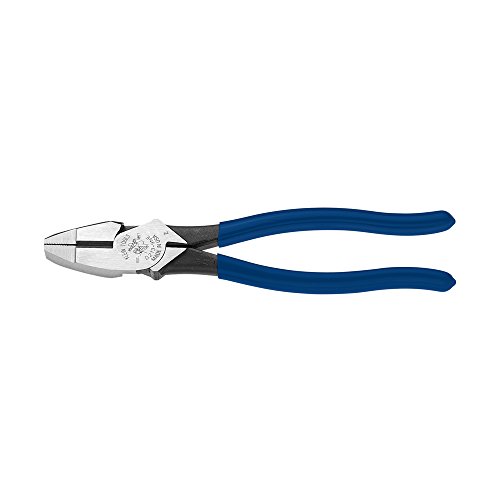
Do you know where all of the electricity generated by your generator goes once it is generated while grounding a portable generator? If you don’t want to be electrified, you might want to begin paying attention to what’s going on around you.
Indeed, devices do not consume all of the available energy in any electrical system. Some are leftover and should be dealt with, or they could creep up on you and hit you in the rear. It is also critical for your protection that any leftover currents are channeled properly to the Earth, which contains the largest reservoir of electric capacity available to you at this time.
This may necessitate some effort, depending on your arrangement and the generators you’re using — grounding a portable generator, for example. Follow the procedure in this article to learn when and how to mechanically ground your generator in various situations.
Concept Of Grounding A Portable Generator

A connection between an electrical system and the ground is called “grounding.” In this instance, the electronic currency is the machine’s frame (since it is metal and can conduct electricity).
A copper rod is usually used to connect a portable generator to the grounding portable generator system.
When risks are not properly understood and evaluated, they can be extremely dangerous.
The framework of a generator is often constructed of metal, which allows it to conduct electricity. Stray or fault currents can pass through the metal frame. These streams can be hazardous to anyone who comes into contact with the frame.
You risk suffering from mild to severe electrical shock if you encounter an ungrounded metal frame. In the worst-case scenario, electrocution occurs.
The energy may run through an engine or a gasoline tank if an electrical fault causes the failure. The fuel may quickly burst into flames, resulting in the generator catching fire and perhaps causing damage to nearby things and surrounding areas.
Grounding a portable generator reduces the likelihood of these dangers by transmitting stray or overvoltages to the ground. This way, everyone who comes into contact with the material frame will be protected from injury.
Do You Require Your Generator To Be Grounded At All Times?
No, you are not required to ground your generator at all times. Whether or not grounding a portable generator is based on the generator and its utilization.
The majority of modern generators are not required to be grounded. On the other hand, some older generators may still require grounding before usage.
The quickest and most straightforward approach to determine whether or not your generator has to be grounded is to review the generator’s handbook, which the maker should provide.
If you are on a building or camping site and do not have access to the handbook, you can complete the following two checks:
- Do you have all of your electronic devices directly linked to your generator through the outlets on the generator? If you answered yes, you are permitted to advance without grounding, given that the following requirement is also met.
- All of the generator’s components must be secured to the metal frame of the generator. It contains the tank, the engines, the generator housing, and other components.
If all the parameters mentioned above are met, you will not be required to ground your unit. A grounding rod is not required in this instance since the metal frame serves as a substitute.
It is necessary to ground a portable generator before progressing any further if any of the mentioned scenarios are not met.
Grounding isn’t necessary in most circumstances when using a modern portable generator ( Honda EG2800i)
There is, though, an exception to this rule! When these criteria are met, grounding a portable generator is still required if your generators are directly connected to your home’s electrical system or the building’s structure.
This guide for grounding requirements for portable generators provides more in-depth data on grounding standards for portable generators.
Grounding A Portable Generator: Basic Tools Needed
Copper Rod
Skywalker - 4ft Ground Rod with Attached Wire Clamp | Copper Grounding Rod Protects Electric Fences, Antennas, Generators, Satellite Dishes
The most critical equipment you’ll need for grounding a portable generator is a copper ground rod. Get a copper rod that is no less than 4 feet long. This will be your primary grounding source.
Mr. Pen- Hammer, 8oz Camping Hammer
Mr. Pen- Hammer, 8oz, Small Hammer, Camping Hammer, Claw Hammer, Stubby Hammer, Tack Hammer, Hammers Tools, Small Hammer for Women, Nail Hammer, Magnetic Hammer, Handy Hammer, Teal Hammer, Kids Hammer
$7.75
You’ll need a hammer to quickly and efficiently push your copper ground rod into the Earth. If you like, you might also use a mallet for this purpose.
25 Feet – Insulated Solid Copper THHN/THWN Wire – 10 AWG
25 Feet (7.5 Meter) - Insulated Solid Copper THHN/THWN Wire - 10 AWG, Wire is Made in The USA, Residential, Commerical, Industrial, Grounding, Electrical Rated for 600 Volts - in Green
$24.97
For your generator to be correctly grounded, it must be linked to the grounding rod. Only use high-quality copper grounding wire.
Wire Strippers
Take the covering from both ends of your grounding wire before wrapping one end all-around rod and connecting the other side to your generator. In that scenario, a wire stripper will assist you quickly, simply stripping your copper wire and grounding portable generators. Do not use your sensitive teeth or fingernails to do the same thing. Otherwise, utilizing a wrapped wire will have no effect.
IRWIN VISE-GRIP Wire Stripper, 8 inch, Cuts 10-22 AWG, Plier Style Nose, ProTouch Grip for Maximum Comfort (2078309)
$13.99
Pliers
One critical step for grounding a portable generator will be carefully wrapping the copper wire around the grounding rod to strengthen the contact. This is when a good pair of pliers will come in handy.
Klein Tools D213-9NE Pliers, 9-Inch Side Cutters, High Leverage Linesman Pliers Cut Copper, Aluminum and other Soft Metals
A Wrench
A decent wrench may be pretty helpful in connecting the copper wire to the generator by loosening a bolt on the generator for an effective attachment.
Olympia Tools Adjustable Wrench 01-015, 15 Inches
There Is Some Information About The Grounding Rod
According to the National Electrical Code (NEC), there are rules for grounding rods, which must be properly followed to ensure the greatest safety and compliance of all the electronic components in your circuit.
Summary: A grounding rod (not to be confused with pipes or conduits) must be at least 8 feet long and 5/8 inch in diameter to be considered safe for usage. They can be made from stainless steel, copper, or zinc-coated steel, among other materials.
Steps to Grounding Portable Generators
Now that you have these tools, it’s time to start working. Here are the procedures to correctly grounding your portable generator:
Installation of the ground rod

Fixing the ground rod, If the soil is soft, use a mallet or a hammer to drive the grounding rod into the Earth. A sledgehammer may be used if the ground is particularly difficult. Alternatively, you can use water to loosen the soil first, then hammer the copper rod into the Earth. According to the National Electrical Code 250.52, the rod shall contact the Earth for at least 8 feet (G).
If the rock bottom does not allow for any other installation method, you may place the rod at an angle of not more than 45°. To comply with NEC 250.52, a grounding rod must be placed at least 30 inches deep in a trench (a hole) at least 30 inches in diameter (G). It does not matter how deep the rod is buried. A safety clamp or fitting must protect any residual above-ground sections.
Linking the copper wire to the grounding rod

Using the wire strippers, detach a portion of the covering from the grounding copper wire before attaching it to the ground rod. Using pliers, wrap this copper wire tightly around the grounding copper rod to secure it. If you have the required equipment, you can also solder the grounding wire to the rod instead of using a connector.
Grounding the generator

Find the grounding bolt on the generator and tighten it down. With a wrench, loosen it up. Tighten the bolt by wrapping the copper grounded wire around it and tightening it. It is possible to solder the cable to the bolt once more if your toolshed permits it.
Conclusion
When setting up a generator, it is critical to ensure properly grounded. It can protect you and your colleagues from potential threats such as electrocution.
As a result, understanding how to ground a generator is essential for everyone considering purchasing or already having one.
Getting a generator that does not need grounding if you are a frequent camper or work on a worksite may be recommended. This would make the system secure but also save time by eliminating the need to set it up.
Disclaimer
The information contained in this article is purely advisory. We will not be held responsible for damages, injury, or another incident that may occur due to reading this post. If you are unsure of what you are doing, we strongly advise that you seek the advice of an experienced professional.
FAQS
Is it necessary to ground a portable generator?
To ensure their safety, portable generators must always be grounded. However, your generator’s specific design will determine whether you need to take any additional steps to ground it. The metal casing of the most up-to-date portable generators creates a channel of least resistance for electricity.
Best way to ground a portable generator?
In order to safely connect your generator to an electrical panel (for use with a building’s power supply, a manual transfer switch, an RV, etc.), a ground rod must be used. The ground lug on the generator must be connected to ground rods driven into the ground. Put the rod at least 8 feet underground.
What happens if a generator isn’t grounded?
Grounding your generator is important so that it doesn’t interfere with your electrical system and cause fires or electrical hazards. There is a risk of fire if any of your electrical appliances overheat.
What is the minimum required depth of a ground rod?
When grounding a portable generator, put as much force as possible into driving the rod into the ground. In order to comply with electrical regulations, it must be lowered to a depth of 8 feet (2.4 m).









